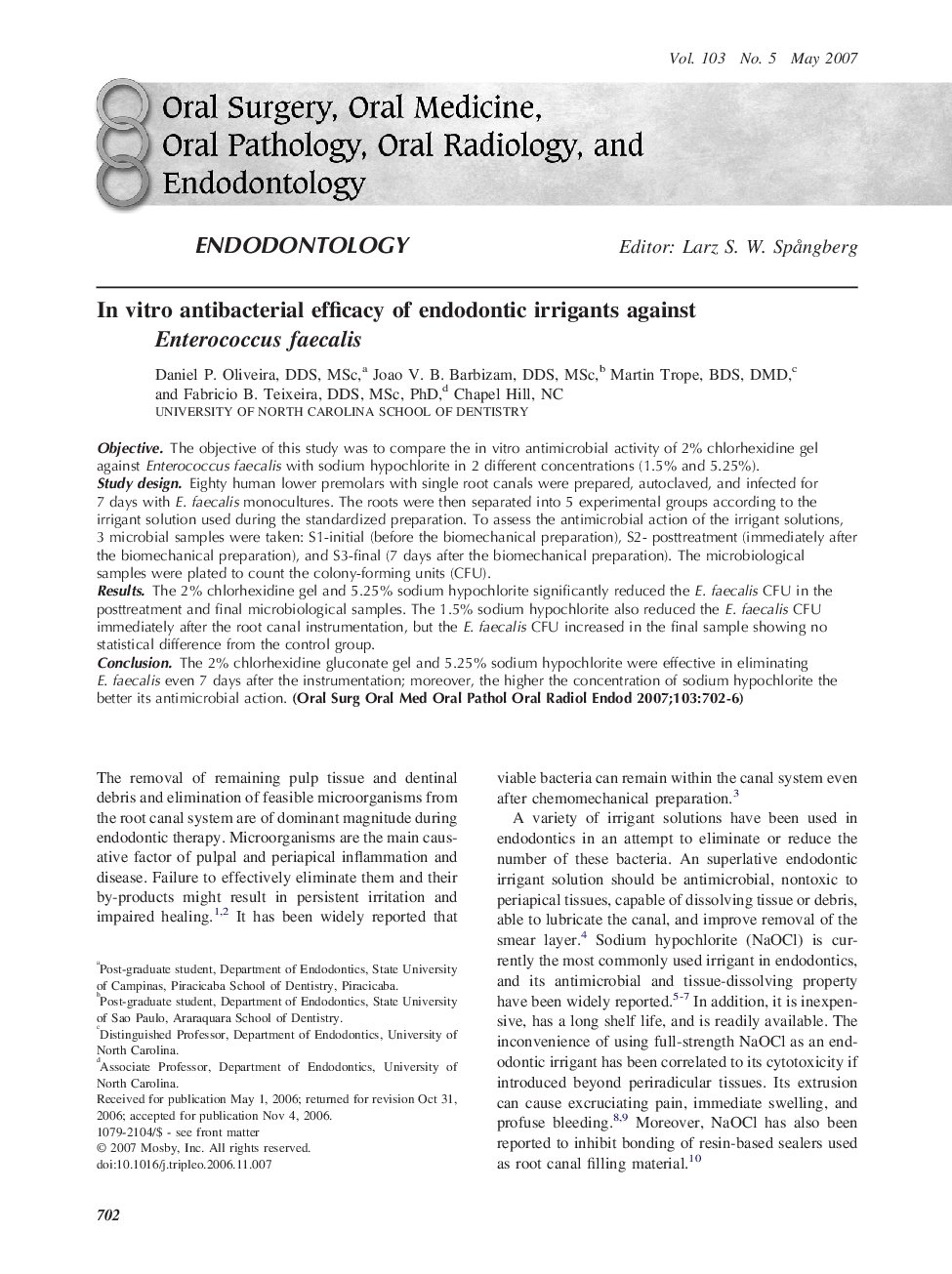| Article ID | Journal | Published Year | Pages | File Type |
|---|---|---|---|---|
| 3169433 | Oral Surgery, Oral Medicine, Oral Pathology, Oral Radiology, and Endodontology | 2007 | 5 Pages |
ObjectiveThe objective of this study was to compare the in vitro antimicrobial activity of 2% chlorhexidine gel against Enterococcus faecalis with sodium hypochlorite in 2 different concentrations (1.5% and 5.25%).Study designEighty human lower premolars with single root canals were prepared, autoclaved, and infected for 7 days with E. faecalis monocultures. The roots were then separated into 5 experimental groups according to the irrigant solution used during the standardized preparation. To assess the antimicrobial action of the irrigant solutions, 3 microbial samples were taken: S1-initial (before the biomechanical preparation), S2- posttreatment (immediately after the biomechanical preparation), and S3-final (7 days after the biomechanical preparation). The microbiological samples were plated to count the colony-forming units (CFU).ResultsThe 2% chlorhexidine gel and 5.25% sodium hypochlorite significantly reduced the E. faecalis CFU in the posttreatment and final microbiological samples. The 1.5% sodium hypochlorite also reduced the E. faecalis CFU immediately after the root canal instrumentation, but the E. faecalis CFU increased in the final sample showing no statistical difference from the control group.ConclusionThe 2% chlorhexidine gluconate gel and 5.25% sodium hypochlorite were effective in eliminating E. faecalis even 7 days after the instrumentation; moreover, the higher the concentration of sodium hypochlorite the better its antimicrobial action.
